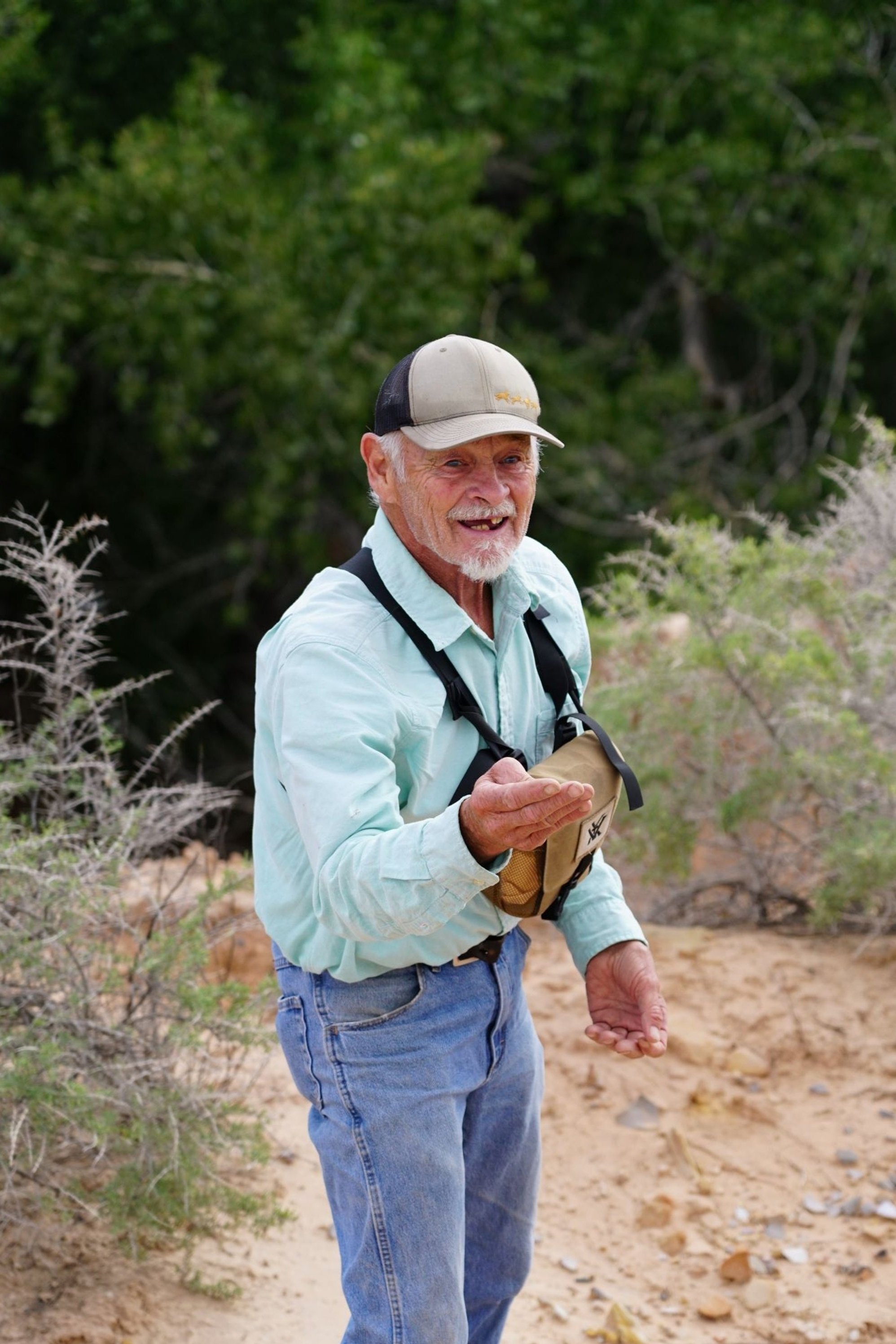Joe Pachak
Artist, Archeologist
Bluff, UT
9/30/2022 — 10/2/2022
Joe Pachak is a creator. In the literal sense, he is a very talented artist. His studio located in the small, recently incorporated town of Bluff, Utah, is home to his collection of sculptures brought to life in detail and beautiful, precise drawings of the ancient carvings pecked into sacred sandstone sites by Basket Maker and Pueblo peoples. Joe is also a creator in that he has the beautiful ability of bringing a deep history to life in front of our eyes. We stand at the edge of an ancient Pueblo pithouse, which, to the untrained eye, looks like a mound of dirt with broken pottery sherds spread about. But with his words and his eccentric hand gestures, Joe rebuilds the Unit Pueblo in front of our eyes: “here is where the hearth would be…. And here, you can see a wall where this upturned cobble is.” He picks up sherds of pottery, chipped churt, and hammered rocks. As he gingerly turns each in his hands, the love he holds for the lives they represent is tangible. He passes each piece around, dating them based on style and material, but once we have each held a piece of history, he asks us to return them. Although artifacts are incredibly powerful, Joe reminds us that “they do not belong to us”. Artifacts belong to a place and time in history. We must leave them where they are found, not only for future historians and archaeologists to gain a better understanding of a place, but also because these places are “the spiritual homes of artifacts.”
The passion Joe expresses in his emotional storytelling is tangible. He speaks slowly, giving every word importance because he sees the importance in the smallest things. When I say “it’s just a sherd” and set a glassy chip back on the earth after mistaking it for a part of an arrowhead, Joe corrects me: “it’s a sherd, no ‘just’”. His intentional view of the world is contagious. He walks us through sacred sites where carvings thousands of years old tie us to the rituals and customs of the Basket Maker and Pueblo peoples who lived here. Joe says he draws these carvings out so that he can “have the same thoughts and to go through the same motions in order to come to an understanding” of the people who created this art. He is a believer in the process. “Energy follows thought” is Joe’s mantra for the three days we are with him. He quotes this Willie Nelson song over and over, instilling in us that with the proper mentality, we have the ability to cause immense change.
By Lila Foster

